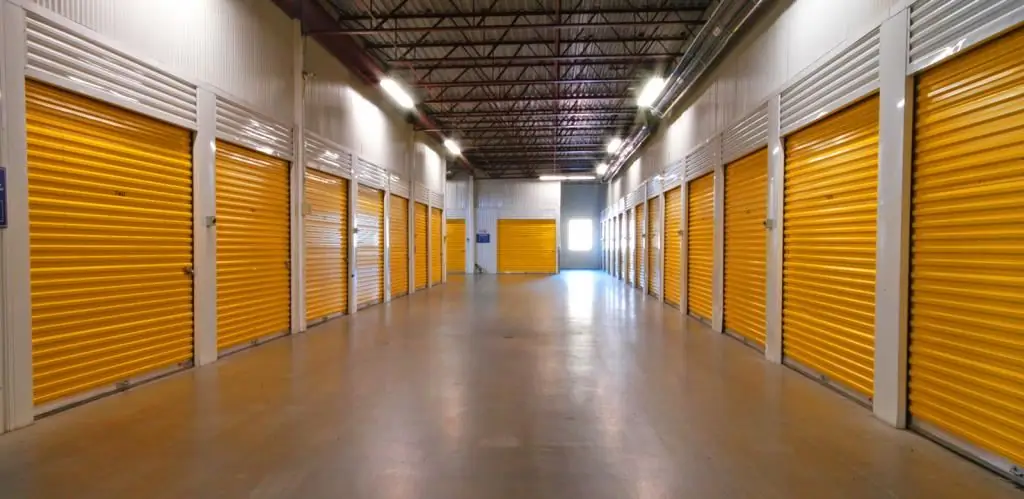2025 Author: Howard Calhoun | [email protected]. Last modified: 2025-01-24 13:10:43
In one form or another, stocks will necessarily exist along the entire path of movement of products from the production area to the circulation area. There are several main reasons for their (reserves) creation: saving money on purchases, reducing the cost of transporting goods, providing various guarantees for the supply and manufacture, protection against a possible increase in prices for various material resources, taking into account seasonal fluctuations in the production and sale of goods, support for various production cycles etc.
The essence of classifications
But in logistics, the subject of study is not the material reserves themselves, but the movement of these resources in time and space. Therefore, the classification of reserves is given within the framework of their consideration as material flows at specific time intervals in the process of further application of various logistics operations to them.
There are several such gradations. We will consider and characterize them in the article.
Simple stocks
Under simple stocks are meant a variety of types of material resources,intended for industrial consumption.
The main reasons for their formation are the following:
- Discrepancy between the volume of a single supply and the volume of one-time use, consumption of a given raw material or finished product.
- Big time difference between production and consumption.
- Climatic conditions of a particular area.
- Desire to reduce shipping costs.

Inventory
Inventory counts as follows:
- Current stocks. They are necessary to ensure production in the interval between receipts of raw materials, materials for manufacturing.
- Preparatory stocks. Necessary to guarantee the smooth operation of the enterprise.
- Guaranteed, insurance reserves. Accumulated in case of interruptions in the supply system.
- Inventory. These are already fully finished products in the channels of various areas of circulation.
Main species
All material and commodity stocks can be divided into three large classes:
- Raw material.
- Products currently under production.
- Finished products.

Separation by purpose
The following differs here:
- Transitional (or technological reserves). They move from one point of the logistics system to another, from one of its branches to another.
- Cyclic(or current stocks). They are created during the production average period. This is the name of stocks of the size of one batch of goods.
- Inventory. Their purpose, respectively, is production consumption. They have already entered production, but have not yet been recycled or used.
- Insurance (or warranty) stocks. As a rule, they have a constant value. They are needed in case of sudden strong fluctuations in demand for products.
- Inventory. They are in the distribution channels. Designed to ensure uninterrupted supply of goods to its consumers.
- "Virtual" stocks. This group includes those that are virtually at points of sale (for example, in stores), but actually still remain in warehouses.
- Preparatory (in other words - buffer) stocks. They necessarily require additional preparation before transportation and further use in production.
- Seasonal stocks. Typical for production, sale, which is seasonal.
- Carryover stocks. This is the name of the balance at the beginning of the new reporting period from the previous year.
- Promotional stocks. Their main purpose is to meet the demand of consumers during advertising campaigns, during the seasons of increasing sales.
- Illiquid stocks. This category includes not used for a long time, both commodity and industrial stocks. In some cases, the reason for this is marriage, damage during transportation.
- State reserves. Such reservesaccordingly, they are created by states in case of natural disasters, armed conflicts, man-made disasters and other emergencies.

According to the place in the supply chains
The classification of stocks according to their place in the logistics channel (or chain) is as follows:
- Stocks of various material resources.
- Inventory of work in progress.
- Stocks of finished goods and products.
- Stocks of packaging containers and returnable waste.
Related to logistics operation
The classification of reserves in this case is represented by their division into the following categories:
- Supply Stocks.
- Type of inventory.
- Commodity (other name - sales) stocks.
- Cumulative stock type.
- Transport stocks. They are also called transit. Or stocks on the way.
- Handling inventory.

Characteristics of categories
Let's look at some of the components of the inventory classification in relation to logistics operations.
Stocks in supply are those material resources that are available in the logistics chains from suppliers to manufacturers, manufacturers. Accordingly, they are designed to support all kinds of production processes.
Production stocks are called stocks of raw materials, containers, packaging, components or other materials that at the time of accounting did not enter the production processesconsumption. It is they who make it possible to ensure the continuity of the entire manufacturing process.
In turn, production inventories are divided into the following categories:
- Regular (or ongoing).
- Warranty (or insurance).
- Preparatory group.
- Illiquid, obsolete (separation into illiquid and stock).
- Seasonal.
The production category here is taken into account in cost and physical units. Its value is affected by the following:
- The need of consumer organizations for these material resources.
- Frequency of release of materials into production/continuity of spending.
- Transportation.
- Stock specifications.
- Seasonality of production and consumption.
Commodity (sales) stocks are called:
- Stocks of finished goods and products.
- Transport stocks that are stored ready-made in the warehouses of the manufacturer.
- Accumulated to meet the demand of buyers in the wholesale or retail process.
In turn, marketing stocks are represented by the following subcategories:
- Regular (current).
- Warranty (insurance).
- Seasonal.
- Preparatory.
- Obsolete (again divided into non-liquid and stock).
The product category is taken into account, analyzed, planned in cost (absolute) and relative (in days of turnover) indicators. They canbe taken into account both at the start and at the end of the period.
Transport, transit - this is the name of stocks in transit. Material resources (both work in progress and finished products) that are in the process of transportation between the links of logistics systems. The size of such stocks will be determined by the distance over which goods move in space, by the coefficients of the linkage of the movement of goods in their circulation. They are also determined by regional or industry specialization, the duration of the stay of goods in transit, the standards for the periods of delivery of goods (measured in days).
Cargo handling is a specific type of warehouse stock, which is formed without logistical storage operations.

By functionality
In this inventory classification, we will distinguish the following categories:
- Current stocks.
- Buffer (other names - insurance, guarantee) stocks.
- Seasonal stocks.
- Preparatory stocks.
- Inventory-promoting finished products.
- Speculative stock group.
- Illiquid (or obsolete inventory).
Characteristics of categories
Let's take a closer look at the components of resource classification by functionality.
Current stocks are the bulk of inventory or production stocks intended primarily to ensure continuity of production/sales processes between receipts. As a rule, they are calculated based ondelivery intervals.
Buffer / insurance / guarantee stocks are needed to reduce risks, which may be associated with fluctuations in the degree of demand for finished goods, failure to fulfill obligations to supply the necessary material resources, failures in technological, production cycles. Or under other unforeseen circumstances, when the need cannot be met in the usual way.
Insurance stock of products is a constant value. Under normal circumstances, it will be inviolable. The norms here are determined on the basis of the average daily consumption of each of the varieties of finished products or material resources.
Preparatory stocks are part of marketing, production. They are intended to prepare both resources and finished products for personal, industrial consumption. They are usually formed as a result of the following:
- Receive goods.
- Product design.
- Loading and unloading.
- Additional levels of preparation for consumption - emptying, drying, cleaning, etc.
The value of preparatory stocks will depend on the amount of time required for the implementation of logistics operations to prepare resources or finished products for consumption. Also, the volume of average daily consumption plays an important role in the calculations.
What is inventory yet? These are seasonal stocks of resources and already finished products or products. They are created, supported by clearly perceptible fluctuations in demand, production or transportation. It is seasonal stocks that allowensure the normal operation of enterprises during the various seasonal breaks.
The value of seasonal stocks of raw materials/ready-made products will be determined as the product of the average daily consumption of a type of material resource by the period of interruption in its receipt or use.
Stocks for the promotion of ready-made products will be formed and maintained in distribution chains for a quick response of the company to its own marketing policy of establishing the supply of goods to the market. As a rule, such stocks, for the most part, are consumer goods. The purpose of their production is to satisfy a possible sharp increase in demand for a particular product of the manufacturer.
Speculative stocks are created by enterprises in case of a possible increase in prices.
What about illiquid (or obsolete) stocks? These are goods that are not available for sale for a long time. There are several reasons for this: deterioration in the quality characteristics of products during storage, obsolescence, expiration of warranty periods for storage/maintenance, etc.

In relation to the logistics system
Classification of inventory is represented here by certain categories:
- Stocks of buyers, consumers.
- Stocks of distributors, sellers.
- Inventory owned by resellers.
By time
The following categories are distinguished in this classification:
- Maximum desirable reserves. The most economically viable stock level in a given logistics system.
- Current stock. Level any stock at any time.
- Guaranteed stock. An insurance category is required in case of supply disruption.

Inventory is one of the fundamental categories in logistics. Since the concept is very broad, everything that is called reserves can have several characteristics - depending on the classification used. Each of them reveals important descriptions of stocks in a certain area of production, sales, etc.
Recommended:
Leasing: advantages and disadvantages, main function, classification, tips and tricks

Definition, functions, advantages and disadvantages of leasing as a form of financial activity. General information, classification of leasing relations. Pros and cons of buying a car on lease, as the most common product. Recommendations for choosing a leasing company
Russia's gold and foreign exchange reserves: size, structure, dynamics

Russia's gold and foreign exchange reserve is a strategic reserve in the form of precious metals, diamonds, major convertible foreign currencies, reserve positions, special drawing rights, and other highly liquid assets
Reserves of banks and their formation. Required bank reserves and their norm

Bank reserves ensure the availability of funds for the uninterrupted fulfillment of payment obligations regarding the return of deposits to depositors and settlements with other financial institutions. In other words, they act as a guarantee
Organizational structure of Russian Railways. Scheme of the management structure of Russian Railways. Structure of Russian Railways and its divisions

The structure of Russian Railways, in addition to the management apparatus, includes various dependent divisions, representative offices in other countries, as well as branches and subsidiaries. The head office of the company is located at: Moscow, st. New Basmannaya d 2
Gold and foreign exchange reserves of Ukraine: statistics and structure

Ukraine's gold and foreign exchange reserves have been declining since 2011. The falling trend indicates the inability of the state to maintain the national currency and the unsatisfactory state of the country's economy

